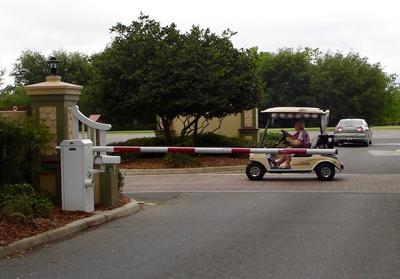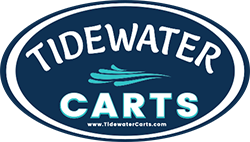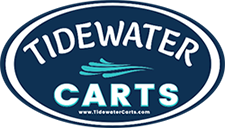Inside the Gated Community

club car, ezgo, golf car, golf car accessories, golf car article, golf car dealer, golf car magazine, golf car news, golf car parts, golf car press release, golf cart, golf cart accessories, golf cart article, golf cart dealer, golf cart life, golf cart magazine, golf cart news, golf cart parts, golf cart press release, pimped out golf carts, street legal golf carts, yamaha golf car
With the coronavirus tethering us to our homes day by day, with only conjecture at this point as to the end of confinement, what other view is there but the long view? That being said there are immediate steps one can take inside the gated community to better assure the maintenance of good health. Therefore, initially the short term, then the long view.
So, let’s first look at steps that can be taken to sanitize our means of mobility, that is to say, our golf cars. Club Car sent out a brief but informative e-mail describing the steps to take in cleaning and disinfecting your vehicle. E-Z-GO has also provided guidance on its website. It won’t hurt to quote extensively from this very helpful missive from Club Car and from E-Z-GOs’ website.
First, as the Club Car message states, there is a distinction between cleaning and disinfecting:
“According to the World Health Organization, cleaning refers to removing germs, dirt and impurities from surfaces. Cleaning does not kill germs, but by removing them, it lowers their numbers and the risk of spreading infection.
“Disinfecting refers to using chemicals to kill germs on surfaces. This process does not necessarily clean dirty surfaces or remove germs, but by killing germs on a surface after cleaning, it can further lower the risk of spreading infection.”
Thus, it is clear that both cleaning and disinfecting are important ways to prevent the spread of COVID19. The Club Car advisory goes on to instruct the use of proper gear, including gloves and masks in the cleaning/disinfecting process. Having taken these precautions, here are the steps involved:
Club Car also advises against mixing various kinds of chemical disinfectants, such as bleach and vinegar, bleach and ammonia, and hydrogen peroxide and vinegar. Doing so, “…can create deadly substances, such as mustard gas.” Yikes!! Reads like one of those prescription drug commercials on TV. The simple solution is, of course, to use various types of disinfectants alone without trying to top off the bottle with a different product.
Chemical disinfectant information provided by E-Z-GO
E-Z-GO advises disinfecting a vehicle’s contact surfaces including the steering wheel, seat, dash area, bag straps, hand holds etc. and do this with appropriate personal protection equipment. Guidelines with regard to disinfecting agents are as follows:
Quaternary ammonium –Clorox
- No known chemical interactions with contact areas
Sodium hypochlorite – Tilex
- Not recommended for contact with sweater basket & bag holder, rocker panels, hip restraints, rear bumper, hand holds
Hydrogen peroxide – Oxi Clean
- Not recommended for contact with windshields
- Not recommended for contact with sweater basket & bag holder, rocker panels, hip restraints, rear bumper, hand holds
Isopropyl Alcohol – Rubbing Alcohol
- Not specifically listed by EPA as an effective COVID-19 control
- Not recommended for contact with windshields
- Not recommended for contact with sweater basket & bag holder, rocker panels, hip restraints, rear bumper, hand holds
Ammonia – Windex
- Not specifically listed by EPA as an effective COVID-19 control
- Not recommended for contact with windshields
Thanks to these companies for their concern and most helpful information to keep our vehicles clean and sanitized and, we, the owners healthy.
Possible dealer hardships
We count on our golf car dealers not only for sales, but also for maintenance, spare parts, and accessories. During a typical year of golf and commuting we routinely go to them for these latter items—and, if the time is right, a new vehicle with the latest gadgets. Many dealers have become our friends. So, bear in mind he or she may be hurting in these difficult times. Sales are likely to be down, while at the same time overhead expenses, including a possible debt load, could well be pushing margins into the red.
Hopefully, the Federal aid package, which includes financial sustenance to small businesses, will provide fi for the dealerships
A possible opportunity for dealers would be one of offering cleaning and disinfecting services, probably in the vein of making house calls–that is, of course, providing they could get the materials and products necessary to carry out such a business. Just a thought.
COVID-19 will cast a new mold for the way we live
Finally, for the longer view—important because COVID-19 will have, I believe, immense implications for where we live, how we live, and how we move about. An excellent piece in the Boston Globe chronicles the rise of cities, the urge to get out of them in the post war period, to now, the place to be. You can access the article here: https://www.bostonglobe.com/2020/03/16/arts/social-distancing-revives-americas-suburban-instincts/ .
The articles also suggests in the wake of the coronavirus that instincts for the open spaces of suburbia might be reawakened. And not just instincts, but cold calculation not only of prospective property owners, but urban planners as well.
Here some major points regarding some likely immediate changes in the way we make decisions about where we reside and modes of transit:
>> Cities are congested. The more congested, the more easily a disease can spread; e.g., New York City, Seattle, San Francisco.
>> Cities are prone to use mass transit systems, usually publicly-owned. This is another way in which cities induce congestion, thereby enhancing the possibility of infection and rendering urban centers inaccessible, if there is an emergency shutdown of these systems. The paradox is that while mass transit systems alleviate traffic congestion, they increase people congestion.
>> In contrast, the suburban living is relatively dispersed, compared to city dwelling. Because places of work are heavily represented in cities, look for trends of businesses moving to suburban locations, much as they did in the 1960s. The technology of video conferencing and teleconferencing are already widely used, making working from home not only an option say on a one day a week basis, but on a five-day a week basis. (Of course not all activities can be operated this way, such as personal care businesses.)
>> Closer to home, look at the rationale for a dispersed clusters of dwellings, such as we see in our gated communities. First, they can be quite self-contained, including health facilities and urgent care capabilities. Second, there is considerable potential for self-driving delivery systems, from robotically-operated, in-village warehouses directly to individual customers. Third, personal transportation vehicles for routine errands and trips to recreation areas are the polar opposite of mass transit, yet in the context of planned communities, like the typical gated community, this disease resistant (see the above) mode of transport makes all the sense in the world.
Government regulations in the aftermath
Rest assured that in the aftermath of this pandemic experience, a “pandemic” of new regulations will be emanating from the CDC, the Federal government, and State and local governments regarding various sorts of mandatory preventive health measures. These measures will also enhance the trend toward dispersed living. Why? Because within planned communities, like our gated community, such regulations will be much easier to implement—and much less of an imposition–compared to urban centers with mass transit systems.
Thus, in wake of COVID-19 dispersed, protective living, elements and benefits of which are described above, will come to the fore. Our gated community, far from being “merely” a retirement community, will become a model for future, mainstream ecosystems (and yes, that includes humans and their PTVs).



